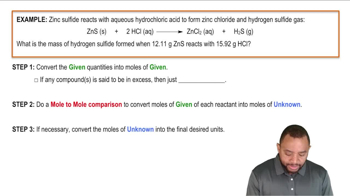Consider this energy diagram:
a. How many elementary steps are involved in this reaction?




Consider this energy diagram:
a. How many elementary steps are involved in this reaction?
Consider this energy diagram:
d. Is the overall reaction endothermic or exothermic?
Consider the reaction in which HCl adds across the double bond of ethene: HCl + H2C=CH2 → H3C-CH2Cl The following mechanism, with the accompanying energy diagram, has been suggested for this reaction:
Step 1 HCl + H2C=CH2 → H3C=CH2+ + Cl-
Step 2 H3C=CH2+ + Cl- → H3C-CH2Cl
b. What is the expected order of the reaction based on the proposed mechanism?
The desorption (leaving of the surface) of a single molecular layer of n-butane from a single crystal of aluminum oxide is found to be first order with a rate constant of 0.128/s at 150 K. a. What is the half-life of the desorption reaction?-